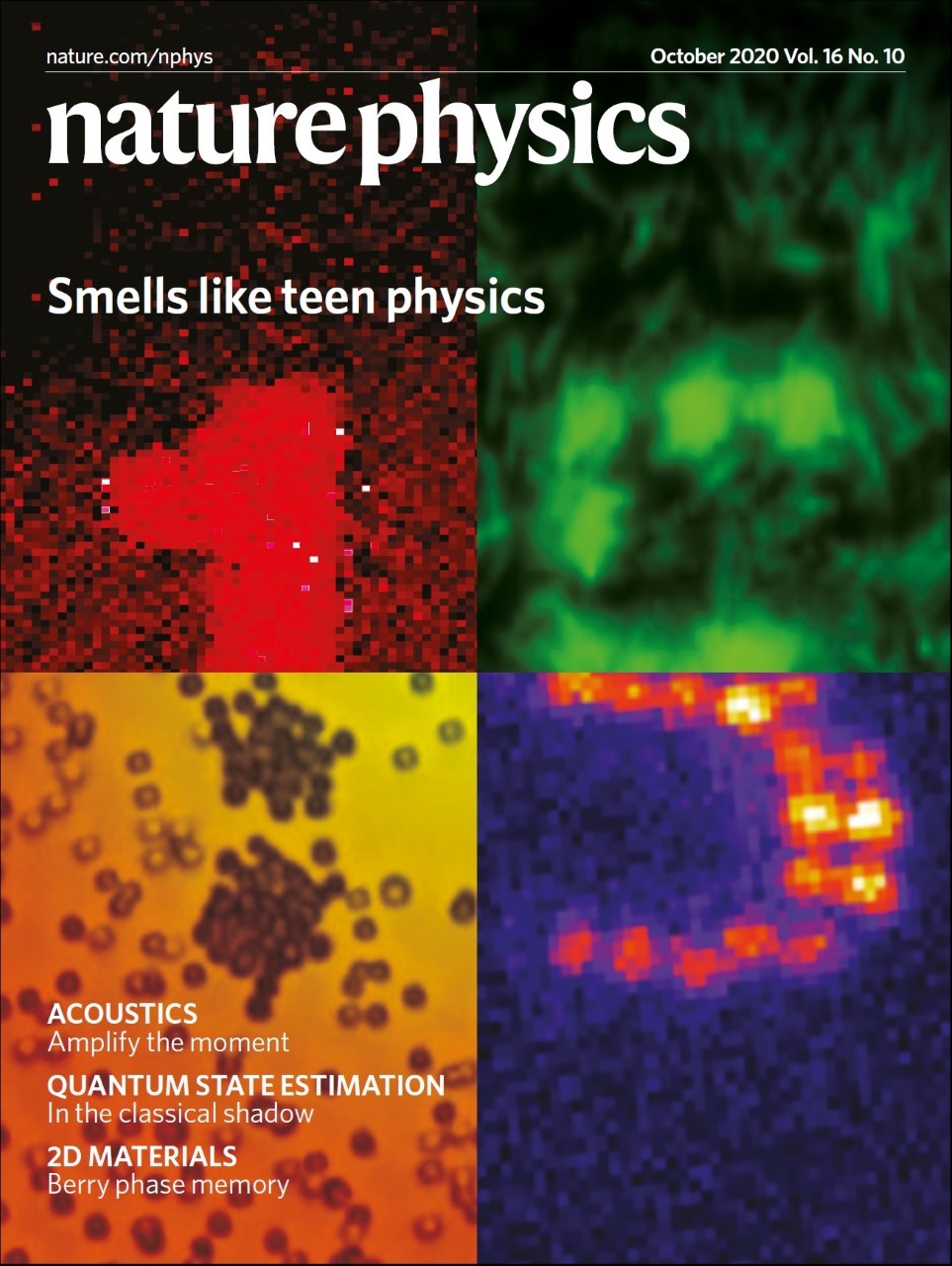Quantum holography highlighted on the cover of Nature Physics
Published: 12 October 2020
n their 15th Birthday issue, Nature Physics highlights the potential of quantum imaging by showing on the cover an image obtained by quantum holography
Quantum physics revolutionizes computing and communication technologies, but also imaging and sensing. In this respect, quantum optical imaging harnesses non-classical properties of light to beat classical limits of resolution and contrast, and to achieve unique imaging performance.
In their 15th Birthday issue, Nature Physics highlights the potential of quantum imaging by showing on the cover (upper left) an image obtained by quantum holography. Quantum holography is an original approach developed by H. Defienne and D. Faccio at the University of Glasgow in which a phase object (in this case representing the number ‘15’) is imaged using a source of entangled photons. The striking point of this technique is that, even if the light used is completely incoherent and unpolarised, holography can still be achieved using entanglement instead of optical coherence to encode and decode phase information. As a result, quantum holography offers unique advantages over classical approaches, such as robustness to phase disorder and stray light, and a higher imaging spatial resolution. Quantum holography is promising for developing new practical applications in biological imaging and sensing, but also for characterizing complex high-dimensional quantum states, that are likely to be at the heart of tomorrow's quantum optical communications and information processing technologies. See also arXiv:1911.01209 for more details.
Link to the cover : https://www.nature.com/articles/s41567-020-01068-0

First published: 12 October 2020
<< News

